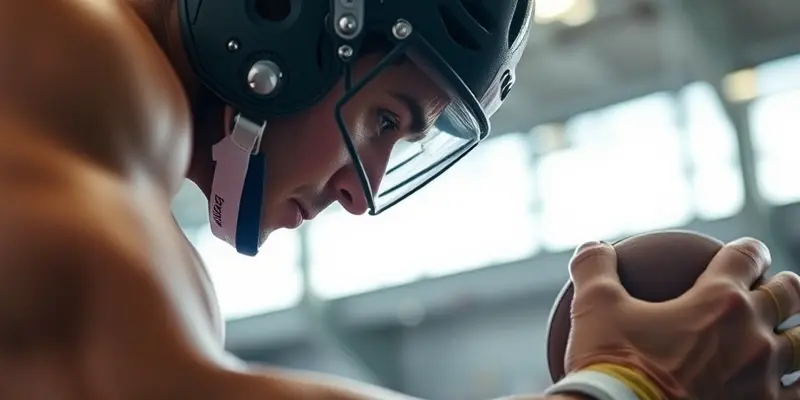Staying active is rewarding, but setbacks from injuries or slow recovery can be discouraging. Whether you’re a beginner in the gym, a weekend runner, or a competitive athlete, making recovery a priority is your secret weapon for long-term progress and enjoyment.
As the lead content writer for GymPulse, with over a decade supporting athletes of all levels, I’m here to share science-backed strategies and practical tips that really work—no jargon, just actionable advice to keep you moving.
Understanding and Preventing Common Sports Injuries
Every athlete, from rookie to pro, faces the risk of injury. The most common culprits? Sprains (like rolled ankles), muscle strains, tears, and overuse injuries such as tendinitis.
How do you stay out of the danger zone?
- Warm up and cool down smart: Think of your body like a car. You wouldn’t race off in first gear—dynamic stretches and light movement gradually prepare your muscles.
- Strength and conditioning: Stronger muscles support and protect your joints. Simple moves—planks, squats, lunges—pay huge dividends.
- Perfect your form: Good technique is your shield. Start slow, learn the basics, and don’t shy away from coaching.
- Wear the right gear: Avoid injury by choosing footwear and equipment that fit your body and your activity.
- Mix it up: Cross-training helps balance muscle groups and prevent overuse. Alternate running with cycling, or weightlifting with yoga.
- Listen to your body: Persistent pain isn’t a badge of honor. Rest if you need it—catching a small issue early beats facing a major setback.
Recovery Made Simple: Practical Steps for Everyone
Injuries happen, and when they do, smart recovery sets the stage for a strong return.
-
Follow the R.I.C.E. method:
-
Rest the area.
-
Apply Ice to reduce swelling.
-
Use Compression to support and control swelling.
-
Elevate to encourage blood flow away from the injury.
-
Rest vs. active recovery:
While rest is crucial after an acute injury, gentle movement (think walking, swimming, or light cycling) can speed healing once pain and swelling subside. -
Physical therapy matters:
A certified therapist tailors rehab exercises to rebuild strength and flexibility—don’t skip this vital step, even if you feel “okay.” For a complete overview, check out our detailed injury recovery checklist.
Nutrition for Faster Healing
You can’t out-supplement a poor diet, but you can speed up healing with the right choices.
- Go for protein: It rebuilds muscle fibers. Chicken, fish, eggs, beans, and Greek yogurt are great sources.
- Don’t fear healthy carbs and fats: Whole grains, fruits, avocados, and nuts support energy and tissue repair.
- Focus on micronutrients: Eat plenty of colorful fruits and veggies for vitamins and minerals that combat inflammation and improve immune function.
- Stay hydrated: Water fuels every healing process. Aim for clear pee—simple but effective!
Quick meal idea:
Grilled salmon, quinoa, and a spinach salad with orange slices covers protein, healthy fats, and antioxidants in one go.
Are Recovery Tools & Gadgets Worth It?
With so many gadgets on the market, it’s easy to feel overwhelmed.
- Foam rollers and massage guns: Great for muscle tension and improving circulation. Use after workouts, or on recovery days.
- Compression sleeves: Helpful for reducing swelling in injured limbs—especially after long runs or intense sessions.
- Contrast baths: Alternate hot and cold water for sore muscles; especially useful after heavy training.
- Wearable tech: Track sleep, heart rate variability, and activity to refine your recovery routine.
Pick one or two basics, and use them consistently—don’t let analysis paralysis stall your recovery!
Staying Motivated: Mental Tools for Recovery
After an injury, motivation can nosedive. The mental side of healing matters just as much as the physical.
- Set clear, achievable goals: Whether it’s walking pain-free or returning to competition, tracking small wins builds momentum.
- Try mindfulness or visualization: Short meditations or imagining successful recovery can reduce stress—your mind is a powerful ally. Learn more about the power of visualization for healing.
- Lean on your support network: Stay connected with teammates, friends, or a fitness community like the GymPulse Club. Sharing your journey makes the process less lonely and more successful.
The Takeaway: Integrate to Elevate Your Recovery
Recovery isn’t just downtime—it’s essential, active work for all athletes. Blend smart injury prevention, evidence-based recovery methods, nourishing nutrition, and mental resilience for your best results.
Ready to take your recovery to the next level? Start with one change today and build from there—your future self will thank you. Stay strong, stay motivated, and remember: at GymPulse, we’re with you at every step.
Want more expert tips or have questions? Drop them in the comments or join our next GymPulse Club Q&A!

